Sebastian Tarek at work in his studio
Earlier today, we took a closer look at Sebastian Tarek's debut collection of beautiful, bespoke and handmade men’s shoes. We chatted to the craftsman about his work, the evolution of the label and heard about his experiences at Menswear Day. Here, we continue the discussion and learn more about his trade before offering a serving of studio porn...

Earlier today, we took a closer look at Sebastian Tarek's debut collection of beautiful, bespoke and handmade men’s shoes. We chatted to the craftsman about his work, the evolution of the label and heard about his experiences at Menswear Day. Here, we continue the discussion and learn more about his trade before offering a serving of studio porn...
----------
SS: I'm instantly struck by the sheer number of rasps, files and hammers. Is it difficult sourcing your tools?
Sebastien Tarek: Really hard. Most of the tools on the bench is long secondhand. The rasps are all new. However, there is a particular rasp which I use more than any other which I went to reorder recently only to find that the the company no longer makes it. This happens all the time. It is my excuse why I go to Spitalfields every Thursday, the hope that I might find old tools, more often than not I find an old jacket but I always keep my eye out for tools. Some of the tools, you'll have for life. When it comes to my pattern hammer I just hope that I never have to replace it. There's a story about my heel hammer actually. My Father came over from Oz and had a few appointments in Paris, one of which was with the Master Bootmaker at Hermes. My Father told him about me and my need for tools and as he was soon to retire he amazingly gave him his heel hammer which clearly he had used for well over fifty years. From one old craftsmen to a newer one. These tools are built to last.
SS: How has the industry changed over the years?
Sebastian Tarek: There has been a recent backlash against the over saturation of the high street and I hope that it can help to sustain these dying crafts. Bespoke shoemaking is a dying craft. The average age in this industry is stratospheric, around sixty sixty years old. In the 1970s, the West End Master Boot makers Association had something like twenty six menders, now there are only four. Hopefully there can be a turnaround. In this time frame, it has gone from being expensive to being truly luxurious in price which makes it difficult to contemporise the market. I lament the fact that very few of my friends own a pair of my shoes but I cannot make them any cheaper. In terms of materials, equipment and just the labour involved.
SS: I appreciate that it varies greatly depending upon the style and finish but how long does it take on average?
Sebastian Tarek: Generally speaking a full week of man hours and that is devoted man hours. There is of course fittings, drying times, if the pair has hand stitched uppers then that takes a full day in itself. I quote three to six months. It is a laborious process but it is such an experiential retail opportunity, the fact that you get a beautiful pair of shoes that you know you've had a direct involvement with and will fit you in a way that you've not experienced before. You have a relationship with this item before you even have them on your feet.
----------It was an absolute pleasure spending an hour with Sebastian Tarek. In the true spirit of his trade, he worked away on his latest design, trimming leather and wielding his pattern hammer as we talked. As he did so, I duly snapped away and explored his studio...

Sebastian Tarek at work and the finished product.

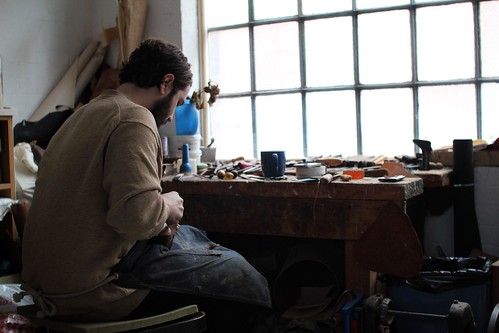
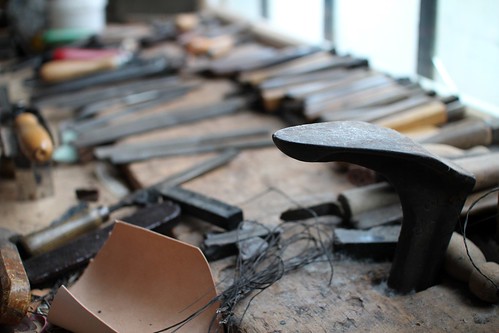

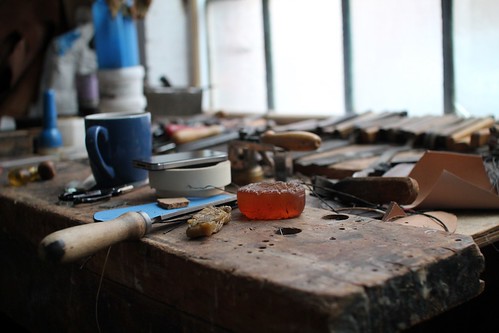
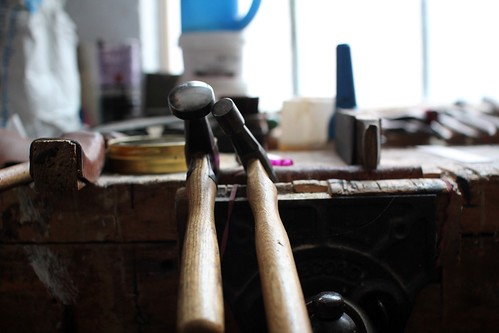
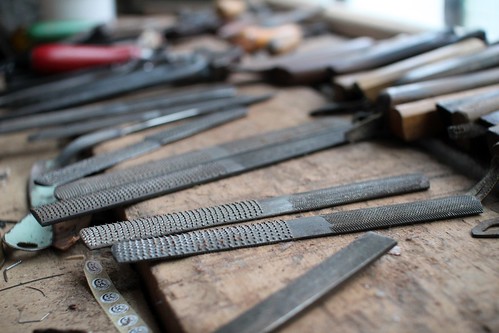
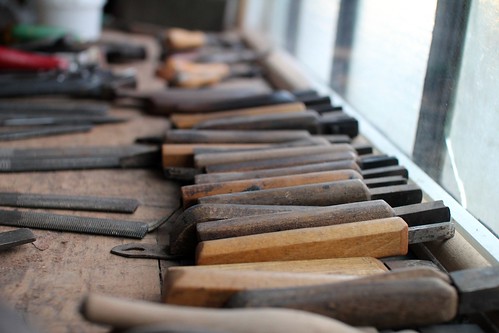

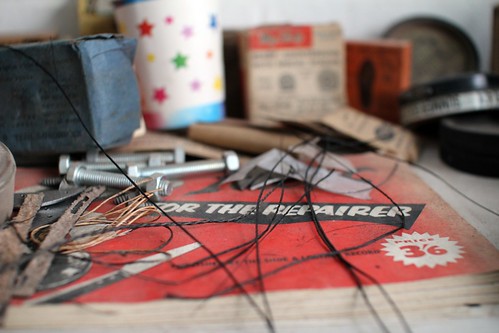
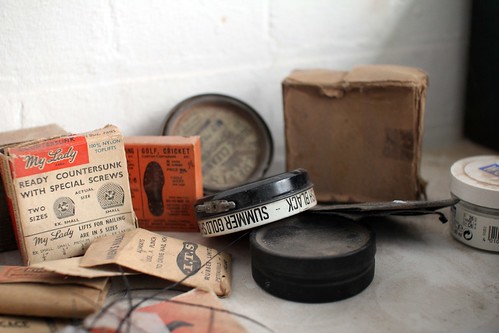

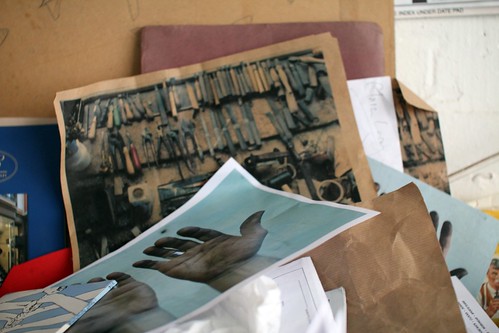
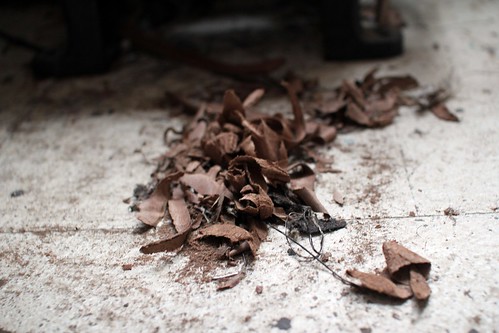
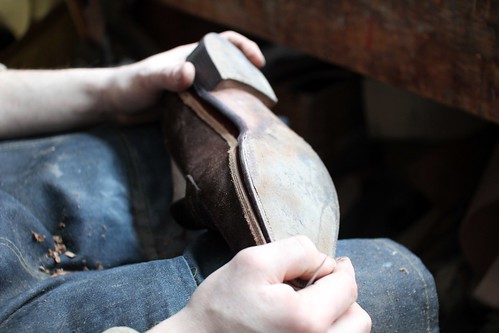
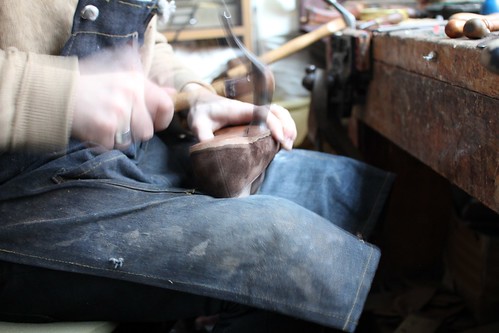
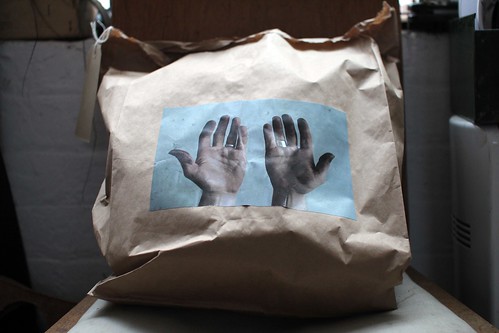
6 comments:
Great shots. Would love to work in a studio and with tools just like that.
I'm getting giddy just looking at those photographs! I do hope he is right about the backlash against the over-saturation of the high street. It is certainly something I have felt personally, and I've been driven towards finding ethically produced clothing.
great to see anything like this up close and personal, makes you feel connected to a product and i think that's what i look for when possible. i watched a programme a while back about a man who wanted to construct a bike from parts he had personally sourced and traveled for. it's an adventure
First off I am admitting it right here. I am so jealous of all those wooden lasts he owns! You cannot even source good quality lasts here in the States let alone lovely wooden ones! Ok back to regular commenting:
The photographs are pure beauty to me, seeing tools, both familiar and alien to me in such a wonderfully creative and old setting is like good dessert. I think this post has helped me fall in love with the art of bespoke shoe making. I totally understand what he means about how few of his friends actually own any of his works. I think some people simply do not understand how difficult it is for small businesses (especially bespoke) to provide large discounts to friends and family. It's tough, really tough. I wish Sebastian all the best and hopefully if I do move back to London I can meet him some day.
Matt: Thanks and agreed. The studio visit was both an inspiring and calming experience.
Syed: Me too! It will be a slow, long, hard process but the more people that see that there is another way the better.
Matt: Exactly! This is precisely the different experience that Sebastien offers. I saw that show, I've since wanted to embark on something similar with building my perfect wardrobe. BBC producers if you're reading this, I'd happily do this! ;)
Brandon: I know your pain. Sebastien conceded that gathering his tools and lasts is becoming increasingly difficult. Yes, I'd love to introduce you to him. I had such an enjoyable lunch break with him and I'm sure he'd be happy to talk you through the trials, tribulations and ecstasy of being a bespoke shoemaker.
great article and brilliant shots, makes you realise how worth it it is to buy shoes that are quality and have been made with love and attention.
Post a Comment